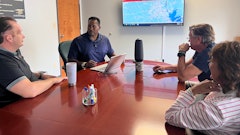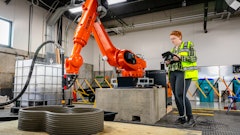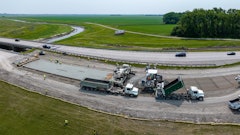
While the recent Bureau of Labor Statistics numbers are good overall with payrolls up by more than 300,000, the labor force participation level of those 25 to 54 years old has seen little change over the past year. As the labor market may be loosening for some industries, construction continues to struggle with a tight labor market.
Finding skilled talent is one of the biggest challenges the construction industry faces today. A survey conducted by Associated General Contractors (AGC) noted that 85% of construction firms report they have open positions they are trying to fill. Among those firms, 88% are having trouble filling at least some of those positions – particularly among the craft workforces.
This labor shortage is exacerbated by current retirement rates, which are 10,000 people per day.
According to the Census Bureau, by 2030, just six short years away, all Baby Boomers will be 65 years or older. This means the industry needs to attract even more workers on top of the normal pace of hiring for the year just to meet labor needs.
Texas in particular has urgent labor needs. The state welcomed more than 9 million new residents between 2000 and 2022, which is more than any other state and almost 3 million more than Florida, which came in second (Census Bureau). Population growth directly impacts the degradation of infrastructure, but also escalates the need for new structures. Building is happening in Texas and contributes to 20% of national commercial real estate spending (2022), but the industry must recruit skilled laborers to meet the enormous demand.
Encouraging careers in construction among the younger generations is paramount to close the skills gap and ensure the continued success of the construction industry. There are a number of ways to support the skilled trades and recruit fresh, new talent.
Engage Early
Recruiting new talent to the construction industry involves dispelling myths about what it means to be in construction today. Partnering with school districts and working with high school students through STEM programs, industrial arts courses or on-site discovery days can open their eyes to the available career paths in construction and foster new talent. The ACE Mentor Program is industry specific and introduces high school juniors and seniors to career opportunities in architecture, construction and engineering through hands-on learning, on-site tours and one-on-one mentorship and coaching.
Many young people do not realize the myriad of possibilities available within the industry, beyond traditional manual labor. However, labor workers are needed, too, and seeing how skilled trades fit within a project, whether it is masonry to welding or plumbing to electric, exposes their own potential within the industry and allows them to explore viable careers.
Recruit the Underrepresented
According to the Bureau of Labor Statistics numbers showing the percent of employed persons by sex, race and, and Hispanic or Latino ethnicity, white male workers dominate the construction and extraction occupations, which includes supervisors of construction trades, carpenters, construction laborers, electricians and the like. There are untapped groups, including women, minorities, and veterans, who could have fruitful careers in construction.
When young people make career decisions, many will follow the examples they’ve seen demonstrated around them. If there have not been members of their family or community in the construction industry, it may not occur to them that it is even a possibility.
Intentionally educating and working with underrepresented groups, whether it is in partnership with high schools or community organizations like Scouts or Girl Scouts, or career fairs at Hispanic-serving institutions, historically Black colleges, trades schools, and veteran events, it is important to have minorities represented at these events. When potential employees – students and adults – see people who look like them being successful within the industry, they get excited about the opportunities. And as with every organization, diversity in the workforce drives innovation, which opens the door to growth.
Develop Internal Talent
Some of the best talent you have already works for your organization. Upskilling is a great way to attract and retain talent. You may have workers who could easily move to another role with the proper training or certifications. To top it off, your investment in the newly trained employee has not only groomed them for a specialized skill but also made them a more agile employee who is eager to learn and grow within your organization. Upskilling does not solve the issue of not having enough people to fill all the roles, but it can help fill gaps in the interim.
Showcase Technology
The construction industry has changed tremendously in the past decade, and it will continue to change even faster as technologies advance. Showcasing the innovative and technological aspects of the industry, such as computer modeling, precision tools, thermography, drone technology, artificial intelligence, and virtual reality, can pique the interest of a new crop of people.
Construction is a forward-thinking and forward-looking industry building for the communities of the future. There is a strong need for innovative thinkers who are excited to develop and test cutting-edge technologies that change the way we build and impact the environment around us. If students today understand and get excited about the innovation involved, it can help change the construction industry’s image and help fill more roles.
Underscore Stability
Construction is a very stable career choice, especially as the country continues to grow. The industry offers competitive compensation, safe work environments, and an increased focus on sustainable building practices, which is an important attribute for many. All of this offers an attractive and secure work environment.
We, as business leaders, are at a critical juncture. The efforts each of us make to introduce construction and the opportunities available within the industry to a wider audience, the better each of us will fare. The work we do now will feed the talent pipeline for years to come, so we all must support the trades and work to meet the growing construction demands.



























